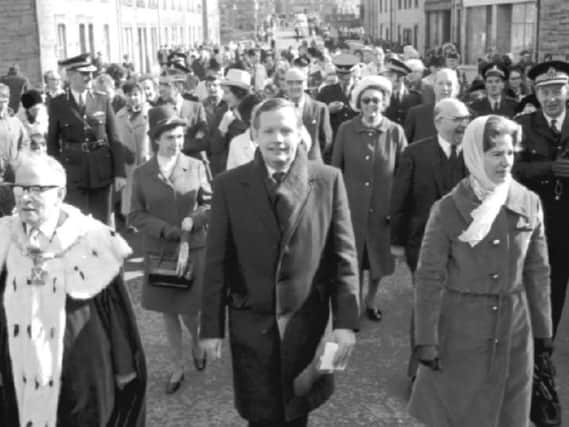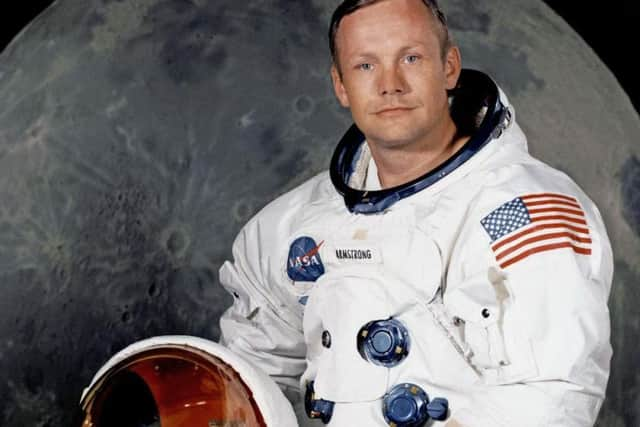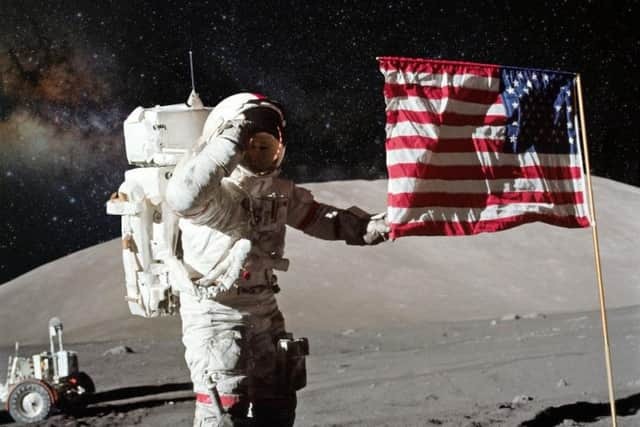Moon landing 50 years on: why astronaut Neil Armstrong calls Scotland home


Armstrong made history on 21 July 1969 when he took man’s first step onto the lunar surface - and just three years later, he achieved another milestone when he visited his ancestral home for the first time.
Langholm, the traditional seat of Clan Armstrong, offered the spaceman a very special distinction and he visited the town to receive it in person. Awe-struck onlookers gathered to catch a glimpse of the greatest hero in space exploration wandering through their cobbled streets.
Advertisement
Hide AdAdvertisement
Hide AdBut why would the small Dumfries & Galloway town lay claim to an Ohio-born astronaut?


What is Neil Armstrong's connection to Langholm?
In the early 1970s, just after the first moon landing, Eddie Armstrong, the clerk of Langholm, invited astronaut Neil Armstrong to become the Dumfries and Galloway town’s first and only Freeman.
The spaceman accepted to the surprise of the town's residents and visited the ‘Muckle Toon’ in 1972 to accept the distinction in person.


The media flocked to Langholm - which has a population of just under 2,500 - from all over the world and for years later, Americans visited to trace their own ancestral roots.
What happened when Neil Armstrong visited Langholm?
Langholm was buzzing with excitement for Neil Armstrong’s arrival. The streets were lined with bunting, and a local piper had written a new song, Commander Neil Armstrong’s Moonstep.
People took to the streets to welcome the American astronaut with waves and cheers. A video of the event can be viewed on the Moving Image Archive.
Everyone in the town wanted to attend the ceremony but the largest building was the parish church, which wasn’t big enough for the throngs and people spilled out onto the streets.
A company from Edinburgh had to be brought in to do the catering since it was too big a job for any Langholm-based firm.
Advertisement
Hide AdAdvertisement
Hide AdNeil Armstrong was welcomed into the church with an organ playing ‘See The Conquering Hero Come’ and a scroll was presented to him in a carving of Gilnockie Tower - home of Clan Armstrong - which had been made by a local craftsman.
An emotional Neil Armstrong commented: "The most difficult place to be recognised is in one's home town. And I consider this now my home town.”
Langholm still holds a series of events each year to commemorate the life of Neil Armstrong, who died on 25 August 2012 at the age of 82.
This year, The Buccleuch Centre in Langholm is hosting Neil Armstrong Week with events taking place from 16 to 21 July.
How did the moon landing unfold?
Apollo 11 was the spaceflight that landed Commander Neil Armstrong and lunar module pilot Buzz Aldrin on the moon on 20 July, 1969, four days after taking off on 16 July.
Armstrong took the first ever step onto the lunar surface on 21 July, six hours after the Apollo Lunar Module Eagle landed, and Aldrin joined him 19 minutes later.
The moment was broadcast live on TV across the world, with around 650 million viewers, and Armstrong famously said: “One small step for [a] man, one giant leap for mankind.”
They collected 21.5kg of lunar material before rejoining the third crew member, Michael Collins, on the command module Columbia to start the descent to Earth.
Advertisement
Hide AdAdvertisement
Hide AdThe crew successfully completed their mission and splashed down into the Pacific Ocean on 24 July, after more than eight days in space.
Apollo 11 ended the Space Race and fulfilled President John F. Kennedy’s goal, set in 1961, of “landing a man on the Moon and returning him safely to the Earth” before the decade was out.
Why bother going to the moon?
Landing the first man on the moon was a demonstration of the US’s technological superiority over the Soviet Union and the rest of the world in the midst of the Cold War.
However, the first moon landing also proved to be one of the most important scientific explorations in history.
Ice found at both poles of the moon could make it easier for astronauts to explore deeper areas of space - including Mars - as it contains hydrogen and oxygen which can be used to fuel rockets.
There’s also been talk of mining the moon for gold, platinum and rare earth metals, although it’s not clear if this will be possible.
The lunar material the astronauts brought back to Earth has helped humans understand how planets are formed, while on Earth many of our oldest rocks have been destroyed.
A series of mirrors were left on the moon too, so that for more than 40 years, astronomers have been measuring the moon’s movements using laser beams to target the reflectors.
Advertisement
Hide AdAdvertisement
Hide AdThe moon landing has also allowed us to test out Einstein’s Theory of General Relativity to find out more about how gravity works - which would be impossible to do with accuracy on Earth.
While no country other than the US has ever sent anyone to space, Russia, Japan, China, the European Space Agency and India have either sent probes to orbit the Moon or have landed vehicles on its surface.
Meanwhile, Langholm and Scotland can quietly lay claim to being the ancestral home of the first man on the moon.